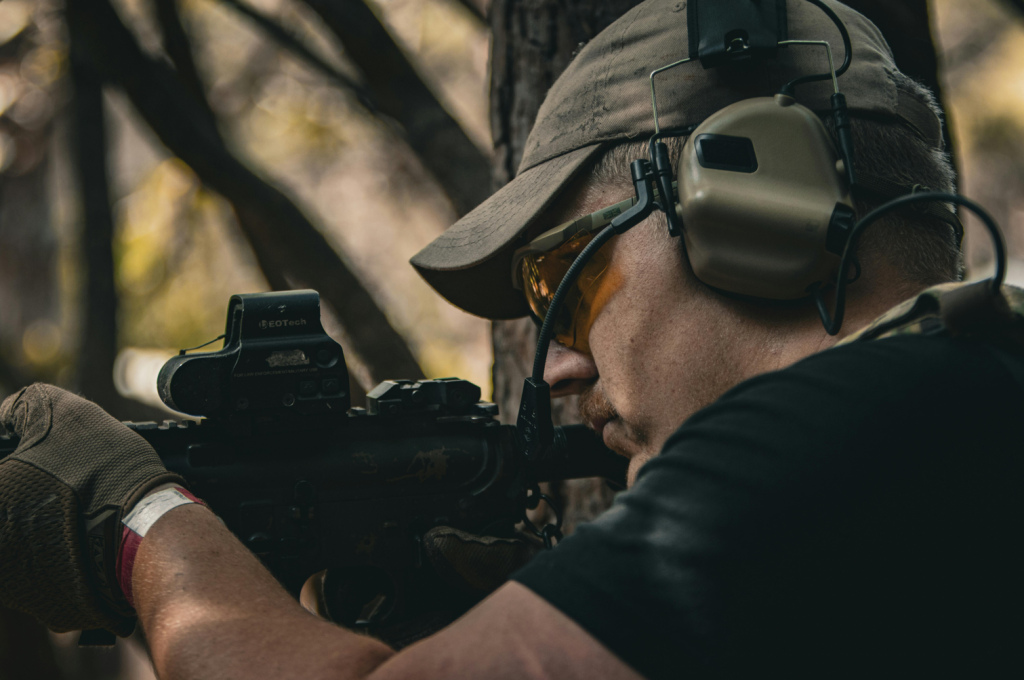For beginners and new shooters, stepping into the world of firearms can be both exciting and overwhelming. Understanding the mechanics of shooting, learning safety protocols, and mastering aim all require practice and guidance. One tool that significantly aids new shooters in this learning curve is firearm optics. These optical devices enhance aiming accuracy and confidence, making shooting more accessible and enjoyable.
In this blog post, we’ll explore how firearm optics enhance shooting for beginners and new shooters by focusing on clarity, precision, ease of use, and safety. Read on!
1. Enhance Visual Clarity and Target Acquisition
One of the primary benefits of firearm optics for beginners is the enhanced visual clarity they provide. Traditional iron sights need the shooter to line up the front and rear sights with the target, a task that can be difficult for beginners. Optics, such as red dot sights or scopes, simplify this process by offering a clear reticle or dot that overlays directly on the target.
This clarity makes it easier to acquire targets quickly and with less eye strain. For beginners who may struggle with focusing on multiple points simultaneously, firearm optics streamline the aiming process, helping them build confidence and reduce frustration.
2. Improve Aiming Precision and Accuracy
Firearm optics significantly boost a shooter’s ability to aim precisely. With iron sights, the margin for error can be higher because of the need to perfectly align the sights. Optics reduce this complexity by allowing shooters to place the reticle on the target without worrying about sight alignment.
This precision is especially helpful for beginners who are still developing their muscle memory and fine motor skills. As a result, shooters experience better shot grouping and can see improvement more quickly, which encourages consistent practice and skill development.
3. Simplify Shooting Mechanics and Reduce Learning Curve
For new shooters, the mechanics of aiming, breathing, and trigger control can feel overwhelming. Firearm optics simplify some of these aspects by making the aiming step more intuitive. Unlike iron sights, which require precise alignment and constant adjustment, optics provide a single aiming point that is easy to track.
This simplification reduces the cognitive load on beginners, allowing them to focus more on fundamental shooting skills such as grip, stance, and trigger pull. By easing the aiming challenge, optics help new shooters progress faster and with less frustration.
4. Increase Shooting Confidence and Enjoyment
Confidence plays a critical role in the learning process for new shooters. Missing the target repeatedly can be discouraging, leading some beginners to lose interest. Firearm optics provide immediate visual feedback by helping shooters place accurate shots more consistently. This success builds confidence and encourages continued practice.
Furthermore, the enjoyment factor increases when shooters feel they are improving. Firearm optics help create a positive feedback loop, where improved accuracy fuels motivation, leading to better skills and more satisfying shooting experiences.
5. Facilitate Training in Various Lighting Conditions
Beginners often train in different environments, from bright outdoor ranges to dim indoor settings. Firearm optics excel in adapting to varying lighting conditions, unlike iron sights, which may be difficult to see clearly in low light.
Many optics feature illuminated reticles or adjustable brightness settings, ensuring the aiming point remains visible regardless of the light. This adaptability allows new shooters to practice effectively in diverse conditions, building versatile shooting skills and preparing them for real-world scenarios.
Firearm optics significantly improve the shooting experience for beginners and new shooters by enhancing clarity, precision, ease of use, confidence, safety, and skill development. These tools simplify the aiming process, reduce the learning curve, and encourage consistent practice, all of which are essential for building competence and enjoyment in shooting. Whether practicing at the range or preparing for real-life situations, optics empower new shooters to hit their targets more effectively and responsibly.

